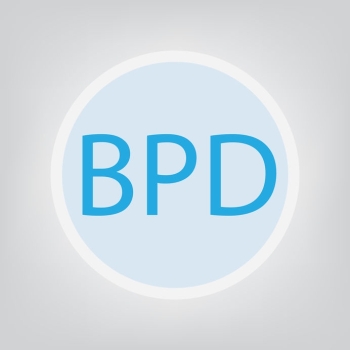
Center for Growth / Borderline Personality Disorder Treatment in Philadelphia:
Borderline Personality Disorder (BPD) is a subcategory of general Personality Disorders. A personality disorder is a psychological disorder that is marked by a long-standing pattern of thoughts, feelings, and behaviors, that are intensely different than what is expected based upon someone’s cultural norms (DSM–IV–TR (2000) 4th ed., text rev.). A personality disorder is said to be the result of some combination of genetics, environment, and childhood experiences that causes some people’s personalities to develop abnormally so they have great difficulty in managing relationships and day-to-day life. More specifically, someone diagnosed with Borderline Personality Disorder will exhibit specific behavioral patterns such as avoidance of abandonment, self injury (i.e. cutting), and “stormy” relationships (Butcher, Mineka, & Hooley, 2008 & DSM–IV–TR (2000) 4th ed., text rev.). This tip is designed to help you understand the diagnostic criteria for Borderline Personality disorder from the DSM-IV-TR, identify some of the common thoughts, feelings, and behaviors associated with a BPD, and gain some basic information on treatment recommendations.
According to the DSM–IV–TR, in order to get a diagnosis of BPD, someone must exhibit a “pervasive pattern of instability of interpersonal relationships, self-image, and affects, and marked impulsivity beginning by early adulthood and present in a variety of contexts, as indicated by five (or more) of the following.” This is the basic description of BPD including a reference to having a general personality disorder. Criterion 1 states that the person exhibits “frantic efforts to avoid real or imagined abandonment (DSM–IV–TR (2000) 4th ed., text rev.).” This means that when in a relationship or friendship, someone with BPB will do whatever he or she can to prevent the other person from leaving them, even if the person shows no actual signs of leaving. The person with BPD might cry, threaten suicide, or repeatedly call/text other people to keep them from abandoning him or her. This BPD behavior often causes distress for the friend or spouse causing them to feel “suffocated.”
Criterion 2 states that the person will have “a pattern of unstable and intense interpersonal relationships characterized by alternating between extremes of idealization and devaluation (DSM–IV–TR (2000) 4th ed., text rev.).” To meet this criteria, the person with BPD would seem like someone who immediately gets into another relationship right after an old one ends. This behavior is also called “splitting,” which means that when in a relationship with someone, one day they are “all good” and then next “all bad.” Someone with BPD will usually find it hard to accept that people can have both positive and negative traits at the same time. Splitting can also look like a child who gets their parents to fight. People with BPD can have a tendency to manipulate others into fighting and blaming one another instead of focusing on what they are doing wrong. This is usually an act of self-preservation to prevent abandonment.
Criterion 3 states that the person has an “identity disturbance [which is a] markedly and persistently unstable self-image or sense of self (DSM–IV–TR (2000) 4th ed., text rev.).” This criterion means that the person with BPD will think pretty lowly of themselves. People diagnosed with BPD will not only find it hard to compromise the good and bad in others, but also in themselves; so they will tend to focus primarily on the negative aspects of their personality and then act out on this overly harsh assessment.
Criterion 4 states that people with BPD experience “impulsivity in at least two areas that are potentially self-damaging (e.g., spending, sex, substance abuse, reckless driving, binge eating) (DSM–IV–TR (2000) 4th ed., text rev.).” This behavior pattern means that someone with BPD will act without thinking. If someone with BPD has a bad day at work, he or she might go out, spend more money than is budgeted, get really drunk, and have unprotected sex with a stranger. This person’s personality disorder tells him or her that its ok to make rash decisions, in response to a negative feeling, without thinking through all the potential consequences.
Criterion 5 states that the person exhibits “recurrent suicidal behavior, gestures, or threats, or self-mutilating behavior (DSM–IV–TR (2000) 4th ed., text rev.).” The self mutilating behavior commonly seen with BPD is cutting, burning, or hitting one’s self. People with BPD will often times turn their negative emotions into physical pain by hurting themselves. This process of hurting themselves is calming because it enables a person to stop their brain from over-thinking, and simply be in their body. The pain is experienced as calming the inner voices or feeling “numbed out.”
Criterion 6 states that people with BPD have “affective instability due to a marked reactivity of mood (e.g., intense episodic dysphoria, irritability, or anxiety usually lasting a few hours and only rarely more than a few days) (DSM–IV–TR (2000) 4th ed., text rev.).” This criterion basically states that people with BPD usually have strong mood swings that cause them distress. Sometimes these moods do not match up with the actual situations they are in response to. For example if a person with BPD doesn’t get an immediate response to a call or text he or she might have intense anxiety and depression which causes them to not be able to sleep for a day or so because they feel like the other person doesn’t care about them.
Criterion 7 includes “chronic feelings of emptiness (DSM–IV–TR (2000) 4th ed., text rev.).” This means that the person with BPD will likely say he or she feels bored, flat, or drained by daily life. With constant feelings of boredom, people with BPD will always be looking for something new and exciting to do leading to the tendency to choose risky yet thrilling behaviors.
Criterion 8 includes “inappropriate, intense anger or difficulty controlling anger (e.g., frequent displays of temper, constant anger, recurrent physical fights) (DSM–IV–TR (2000) 4th ed., text rev.).” This criterion shows us that people with BPD will often react with anger to seemingly mild situations. They may also use extreme sarcasm or bitterness to communicate with friends, spouses, and family members that they feel are withholding affection.
Lastly, criterion 9 states that people with BPD experience “transient, stress-related paranoid ideation or severe dissociative symptoms (DSM–IV–TR (2000) 4th ed., text rev.).” This criterion means that when a person with BPD feels really stressed out, he or she might feel intensely worried that something bad is going to continue happening. Sometimes the person will feel as though he or she is watching the events happen to them, rather than being a part of it.
About seventy-five percent of the people who receive a diagnosis if Borderline Personality Disorder are women. Research shows that only about 1-2 percent of the general populations meets criteria for BPD; however, approximately 10 percent of all people in outpatient psychological treatment, and 20 percent of all people in inpatient psychological treatment qualify for the diagnosis (Butcher et. al., 2008 & DSM–IV–TR (2000) 4th ed., text rev.). This means that getting a diagnosis of Borderline Personality Disorder is pretty rare. People with BPD will often have other psychological disorders such as anxiety, depression, substance abuse, eating disorders, or other personality disorders due to their impairment in social and occupational functioning (Butcher et. al., 2008). BPD, like any personality disorder, or psychological illness needs to be diagnosed by a trained mental health professional such as a doctor, psychiatrist, or therapist. To make a diagnosis of BPD, therapist will meet with the person for an assessment, which may include self-reported descriptions of behaviors and emotions, reports from significant members of the person’s life, a written assessment, and/or a report from the person’s doctor or psychiatrist. They will discuss the person’s social, interpersonal, work, school, home, and family functioning in order to determine if BPD is an appropriate diagnosis. From a clinical standpoint it’s helpful to remember that a diagnosis helps guide therapists toward which interventions to use and does not represent a judgment on the person.
After an assessment is conducted and a diagnosis of BPD is made, people will want to start treatment as soon as possible. Individual and group therapy can help treat the behaviors associated with most types of personality disorders; while medications can be helpful to control the intense emotions. While almost any form of therapy (i.e. Psychodynamic, Client Centered, CBT) can be used to treat Borderline Personality Disorder with a trained, professional therapist; Dialectical Behavior Therapy (DBT) has been studied and proven to be one of the most effective treatments for people with BPD (Butcher et. al., 2008 & McKay, Wood, & Brantley, 2007). DBT is a treatment modality that is targeted to help people manage overwhelming emotions. It can be used in both an individual or group setting. Some main principles of DBT include distress tolerance, mindfulness, emotion regulation, and interpersonal effectiveness. The major premise of DBT is to help people with BPD to accept their negative emotional states without participating in self-destructive or other maladaptive behaviors (Butcher et. al., 2008 & McKay, et. al., 2007). For diagnosis of, therapy, or support with a Borderline Personality Disorder please contact us at The Center for Growth / Borderline Personality Disorder Treatment in Philadelphia 267-324-9564
References
American Psychiatric Association. (2000). Diagnostic and statistical
manual of mental disorders (4th ed., text rev.). Washington, DC: Author.
Butcher, J.N., Mineka, S., and Hooley, J.M. (2008). Abnormal Psychology: Core Concepts. Boston, MA: Pearson Education, Inc.
McKay, M., Wood, J.C., and Brantley, J. (2007). The Dialectical Behavior Therapy Skills Workbook: Practical DBT Exercises for Learning Mindfulness, Interpersonal Effectiveness, Emotion Regulation, and Distress Tolerance. Oakland, CA: New Harbinger Publications, Inc.



























